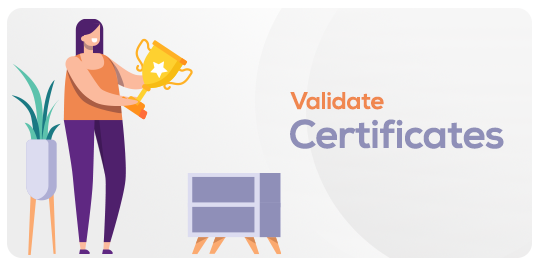The Principles Of Exercise Therapy
in Physiotherapy
Created by
M Dena Gardiner
About this course
This book has been written for all those who are interested in the use of exercise to promote physical rehabilitation. It is, however, primarily designed to provide students training in physiotherapy with a simple theoretical background for the practical instruction they receive in the performance and use of movement and exercises for therapeutic purposes.
Comments (0)
Golden Points
1 Parts
Mechanical Principles GOLDEN POINTS
-
See & Perceive
13 Parts
8.1-Passive Movement-Shoulder Joint
-
8.2-Passive Movement-Elbow Joint
-
8.3-Passive Movement- Wrist Joint
-
8.4-Passive Movement-Hip Joint
-
8.5-Passive Movement- Knee Joint
-
8.6-Passive Movement-Ankle Joint
-
8.7-Passive Movement-Cervical Spine
-
15.1 Accessory Movement - Inferior Radioulnar Joint
-
15.2 Accessory Movement - Patello-Femoral Joint
-
17.1 Assisted & Resisted Exercises - Hip Flexors & Extensors
-
17.2 Assisted & Resisted Exercises - Hip Medial & Lateral Rotators
-
17.3 Assisted & Resisted Exercises - Knee Flexors & Extensors
-
17.4 Assisted & Resisted Exercises - Wrist (Manual)
-
Search on the Go
20 Parts
1.1 Mechanics of Position
0.87 MB
2.1 Group Action of Muscles
0.62 MB
3.1 Techniques of Exercise Therapy
0.4 MB
4.1 Pelvic Tilt
1.37 MB
6.1 Classification of Active Movement
0.22 MB
6.2 The Reflex Arc
0.52 MB
7.1 General Relaxation
1.42 MB
8.1 Definitions in Passive Movement
0.24 MB
10.1 Patterns of Facilitation (PNF)
1.48 MB
12.1 Correction of Some Common Mistakes in Standing Up
0.57 MB
12.2 Correction of Faulty Patterns of Walking
0.77 MB
14.1 Limitation of the Range of Joint Movement
0.39 MB
16.1 Types of Muscle Work
1.1 MB
16.2 Range of Muscle Work
0.48 MB
16.3 Measures used to obtain Initiation of Contraction
0.39 MB
18.1 Frenkels Exercises
1.8 MB
19.1 The Postural Mechanism
0.6 MB
19.2 Technique of Re-education
1.19 MB
21.1 Group Exercise
0.79 MB
23.1 Methods of Instruction
0.66 MB
High Yield Topics
30 Parts
Fig 1.6 Centre of gravity for the human body
0.71 MB
Fig 1.7 Line of gravity through the human body
0.65 MB
Fig 1.11 A to C
1.08 MB
Fig 1.18 A B First orders levers
0.71 MB
Fig 1.19 A B Second order levers
0.79 MB
Fig 1.20 A B Third order levers
0.79 MB
Fig 1.29 Hookes law
0.62 MB
Fig 4.8 A to C Antero-posterior tilting of pelvis
0.81 MB
Fig 4.9 A to C Lateral tilting of pelvis
0.84 MB
Fig 5.1 A to F Positions Derived from Standing by alteration of the arms
0.83 MB
Fig 5.4 A to E Positions Derived from Standing by alteration of the legs
0.79 MB
Fig 5.8 A to E Positions Derived from Kneeling
0.8 MB
Fig 5.9 A to L Positions Derived from Sitting
1.12 MB
Fig 5.10 A to J Positions Derived from Lying
1.03 MB
Fig 6.8 Schematic Reflex Arc
0.66 MB
Fig 9.1 Factors influencing the Anterior Horn Cells
0.7 MB
Fig 10.1 A and B Neck patterns
0.66 MB
Fig 10.2 A to D Upper limb patterns
0.78 MB
Fig 10.3 A to D Lower limb patterns
0.8 MB
Fig 10.4 A to D Trunk patterns
0.83 MB
Table 10.1 Summary of diagonal patterns in proprioceptive neuromuscular facilitation (PNF)
0.99 MB
Fig 16.1 A and B Concentric muscle work
0.87 MB
Fig 16.2 A and B Eccentric muscle work
0.84 MB
Fig 16.3 Range of Muscle Work
0.66 MB
Fig 17.21 A and B Interdependence of lumbar flexors and hip flexors
0.82 MB
Fig 17.24 A to C Role of hip abductors in weight transference
0.77 MB
Fig 17.45 Horizontal section of thorax to show plane of the scapula
0.64 MB
Fig 18.1 Group action of muscles for knee flexion
0.73 MB
Fig 19.1 Postural Reflex Mechanism
0.71 MB
Fig 19.2A to F Good and Faulty Alignment in Standing, Running and Sitting
0.9 MB
Quiz & Certificates
Dena Gardiner
123 Questions
Min
Passed grade: 122/127
Attempts: 0/

0
0 Reviews







